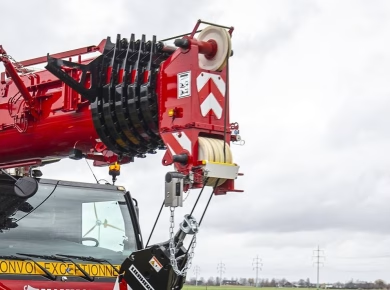Suspension trauma is often an overlooked risk in the construction industry, yet it can have dire consequences for workers who find themselves suspended in harnesses after a fall. As a safety professional, I’ve witnessed the chilling aftermath of these incidents, where a moment of carelessness can lead to grave outcomes. Understanding suspension trauma is not just about compliance; it’s about safeguarding lives and ensuring that every worker returns home safely. This burden of responsibility weighs heavily, and it’s essential to tackle this topic with the seriousness it deserves.
Understanding Suspension Trauma
Suspension trauma occurs when a person is left hanging in a harness after a fall, leading to physiological complications. The body can experience blood pooling in the legs, which may result in a rapid drop in blood pressure and ultimately lead to unconsciousness or worse. This condition is particularly insidious because it can develop quickly, often without any warning signs, making it critical for all site personnel to be informed about its dangers.
The Physiology Behind Suspension Trauma
When suspended, the blood circulation in the legs is interrupted. The harness, while designed to catch a fall, can restrict blood flow. The body’s natural response to being upright is disrupted, and without proper movement, the heart struggles to pump blood back to vital organs. This is why understanding suspension trauma is crucial—not only for the individual’s immediate safety but also for long-term health outcomes.
Real-World Implications
I recall a project where a worker fell while installing safety netting on a high-rise building. Fortunately, the harness worked as it should, but he was left hanging for several minutes before being rescued. In those moments, the team on the ground was unaware of the potential for suspension trauma. The worker was lucky; he suffered no long-term effects, but the incident highlighted a glaring gap in our safety training. This experience reinforced the idea that awareness and preparedness can make all the difference.
Training and Preparedness
Training should extend beyond basic fall protection techniques. It’s essential to include specific modules on suspension trauma in safety training programs. Workers should understand not only how to use their personal protective equipment (PPE) but also the risks associated with suspension. Conducting drills that simulate rescue scenarios can enhance preparedness, ensuring that everyone knows how to act swiftly and effectively should an incident occur.
Preventative Measures
Incorporating preventative measures can significantly mitigate the risk of suspension trauma. Workers should be trained to use harnesses correctly, ensuring they are comfortable and appropriately fitted to minimize the risk of suspension. Additionally, consider implementing systems that allow for quicker rescue times. The faster a suspended worker can be brought to safety, the lower the risk of suspension trauma.
Safety Equipment Innovations
Recent innovations in safety equipment also provide additional layers of protection. For instance, some harnesses come with integrated suspension trauma straps that allow workers to relieve pressure on their legs while waiting for rescue. Familiarity with these advancements can empower workers, providing them with tools to manage their safety proactively.
Establishing a Culture of Safety
Creating a culture that prioritizes safety requires continuous effort and engagement from all levels of an organization. Open discussions about the risks of suspension trauma and regular safety briefings can help keep this important issue at the forefront of everyone’s mind. Encourage workers to share their concerns and experiences, fostering an environment where safety is not just a checklist but a core value.
Engaging Workers in Safety Protocols
Engage your workforce in safety audits and discussions. By involving workers in the identification of potential hazards, you foster ownership and accountability. Workers who feel empowered to speak up about safety issues are more likely to adhere to protocols and encourage their peers to do the same.
Conclusion: Committing to Best Practices
Suspension trauma is a risk that demands our attention and action. As professionals in construction, health and safety, and site management, we must prioritize training, preparedness, and culture to combat this silent threat. Every worker deserves to feel safe and secure in their environment, and by implementing these practices, we can ensure that we are doing everything possible to protect them. Remember, safety isn’t just a policy—it’s a commitment we make to ourselves and to each other. Let’s continue to foster awareness and make strides toward a safer workplace, because the cost of negligence is far too high.


